In general you want to use only hardwood from fruit or nut-bearing tree species.
Hardwood smoke exists on a spectrum from light to pungent:
- Light = Alder, Maple
- Medium = Fruit woods (apple, cherry, peach, etc.)
- Stronger than Medium = Oak, Pecan, Hickory
- Pungent = Mesquite
Click a Species of Wood to Learn More
Other Hardwoods that You’ll See Mentioned are:
| Acacia | Alder | Almond |
| Apricot | Ash | Bay |
| Beech | Birch | Butternut |
| Chestnut | Cottonwood | Crabapple |
| Fig | Grapefruit | Grapevine |
| Guava | Hackberry | Kiawe |
| Lemon | Lilac | Madrone |
| Manzanita | Mulberry | Nectarine |
| Olive | Orange | Pear |
| Persimmon | Pimento | Plum |
| Sassafras | Walnut | Willow |
As you might expect, the more popular species are easier to source through local Hobby stores.
I’ve also bought several species of wood online (all the wood in this article was actually bought online).
My Experiences With the Popular Hardwoods for Smoking Meat
Apple
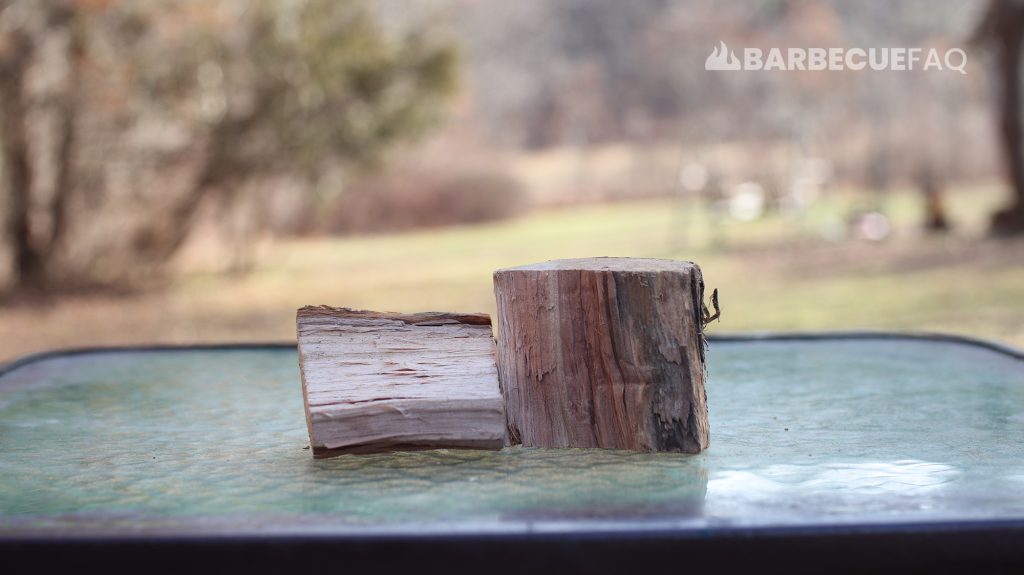
- Smoke Flavor: Medium
- Common Use: Pork, Poultry, and Cheese
- Availability: Readily available regardless of locale
Personally, I’m not big on using Apple – I’d much rather use Cherry.
For fruit wood smoke flavor I find from Weakest to strongest:
Apple > Cherry > Peach
I know lots of people like to use it with pork ribs but even in my side-by-side comparisons, I always like cherry smoke more.
I also use Apple or Maple for cold smoking because it’s cheap and readily available in any form (chips, chunks, sawdust, pellets, etc.)
Cherry
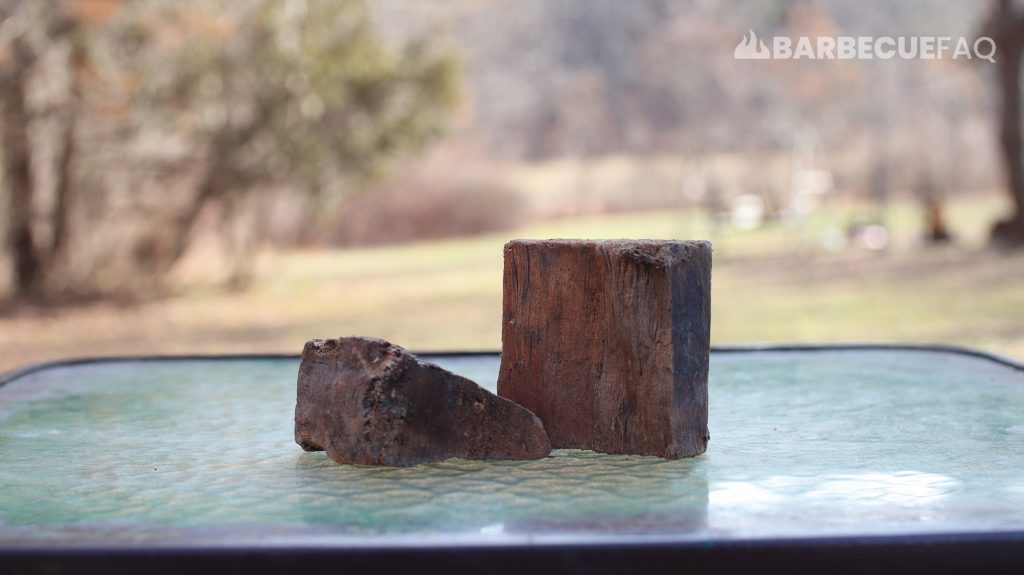
- Smoke Flavor: Medium, Slightly Sweet
- Common Use: Pork and Beef
- Availability: Readily available regardless of locale
- Dylan’s Favorite Smoking Wood
If you’re smoking food for friends and family and you don’t know how much “smoke” they cherry wood is a great starting point.
It’s best described as having a subtle, sweet, fruity flavor/aroma.
Cherry wood is also commonly used because it helps add to bark color (will add a reddish hue).
A lot of recipes on the internet will tell to use cheap Paprika and other spices that seemingly only exist for color – I’d rather just use kosher salt and pepper and let the cherry wood smoke add the color.
I’m a big fan of cherry wood with ribs – I’ll typically mix a chunk of cherry and post oak or pecan.
Hickory
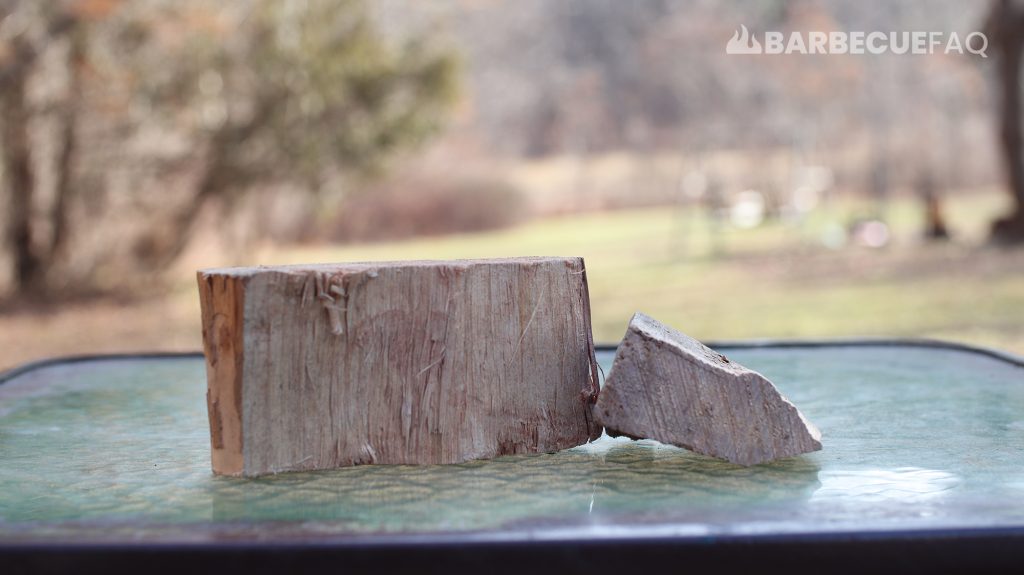
- Smoke Flavor: Stronger, often equated to the richness of bacon
- Common Use: Pork and Beef
- Availability: Readily available regardless of locale
Aside from Oak, hickory is considered one of the most popular hardwoods in barbecue.
It has a stronger flavor than Oak though they’re often used together because they burn similarly.
It’s also often used because it adds a dark color to smoked meat.
Maple Wood
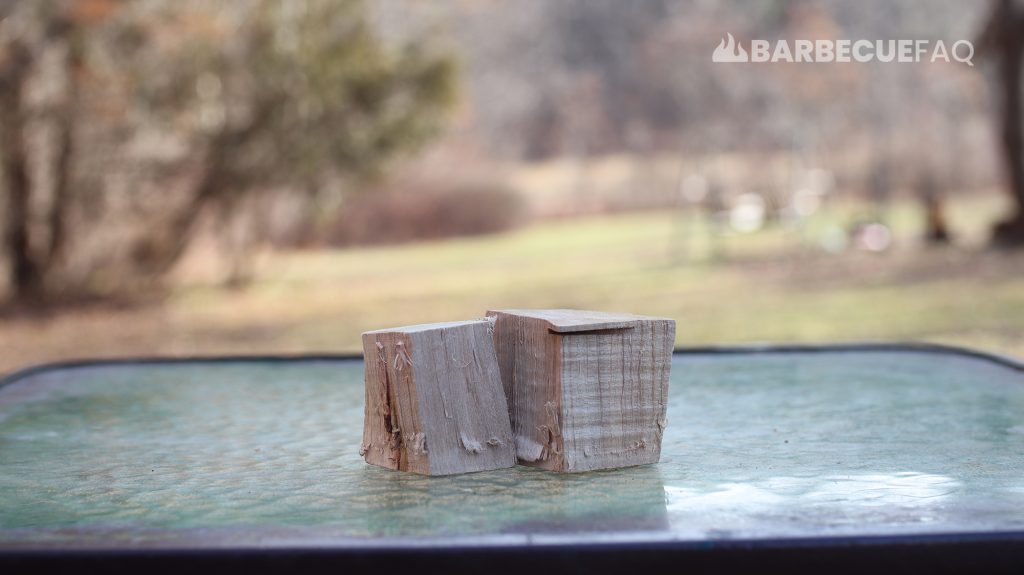
- Smoke Flavor: Light
- Common Use: Cheese, Fish, Poultry, Vegetables
- Availability: Not common everywhere
Maple is typically used for “delicate cooks” like vegetables, cheese, and even chicken/poultry.
If you want quite literally a “kiss” of smoke, maple is probably the best option.
Maple is also my personal favorite for smoking fish since I don’t have access to alder locally.
Oak
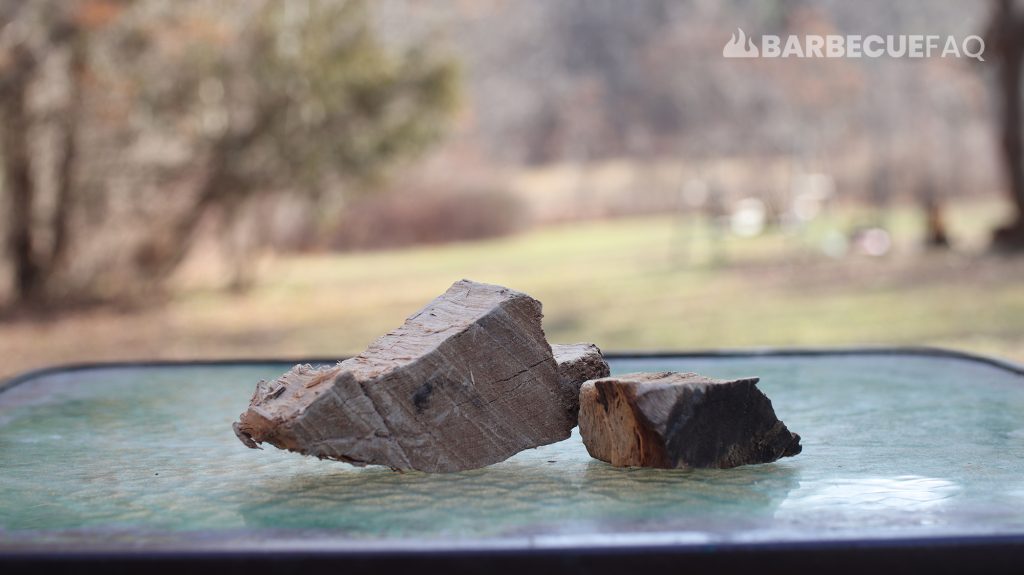
- Smoke Flavor: Stronger than Fruit woods but lighter than Nut woods
- Common Use: Beef, Poultry, Fish, Pork, Cheese, etc.
- Availability: Not common everywhere
Oak goes well with just about any barbecue meat or food; It has a medium smoky flavor.
I’m a big fan of post-oak for beef and I also think it works well with pork.
But I’d still rather use Cherry with pork and add Pecan for more smoke.
Mesquite Wood
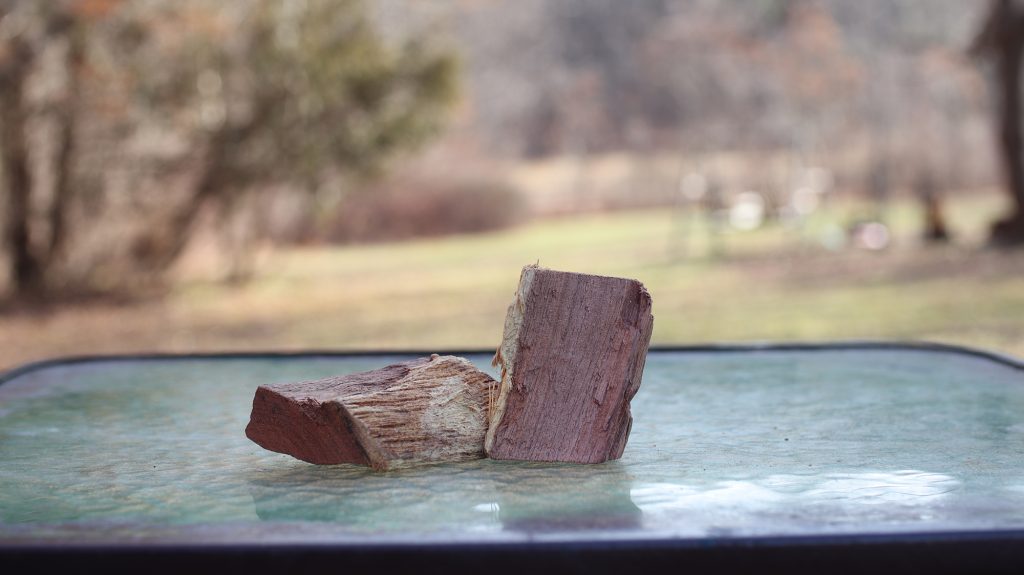
- Smoke Flavor: Strong
- Common Use: Beef
- Availability: Readily available regardless of locale
Mesquite is quite popular in Texas barbecue.
However, it’s typically not used as a smoking wood – it’s usually burned down into coals to function as a heat source.
It’s best described as strong and it will easily overpower your food. When used sparingly it works well with beef and other cuts of meat.
I’m truly not a big fan of mesquite; In almost all cases I’d rather use Cherry, Oak, Hickory, or Pecan.
I do sometimes like to use a few mesquite wood chips when making jerky – although, sparingly (quite literally 3-5 wood chips).
Mesquite’s stronger smoke flavor comes from it’s lignin composition.
Peach

- Smoke Flavor: Strong
- Common Use: Beef, Pork, Poultry
- Availability: Not common everywhere
To me, peach wood is similar to that of other fruit woods – a mild sweet, fruity smoke.
I’ve used it to great success with all the same meats as Cherry – beef, pork, and poultry.
Like I noted above though, Peach is notoriously hard to source, especially online for a fair price. Most folks who use it likely source it locally.
Pecan
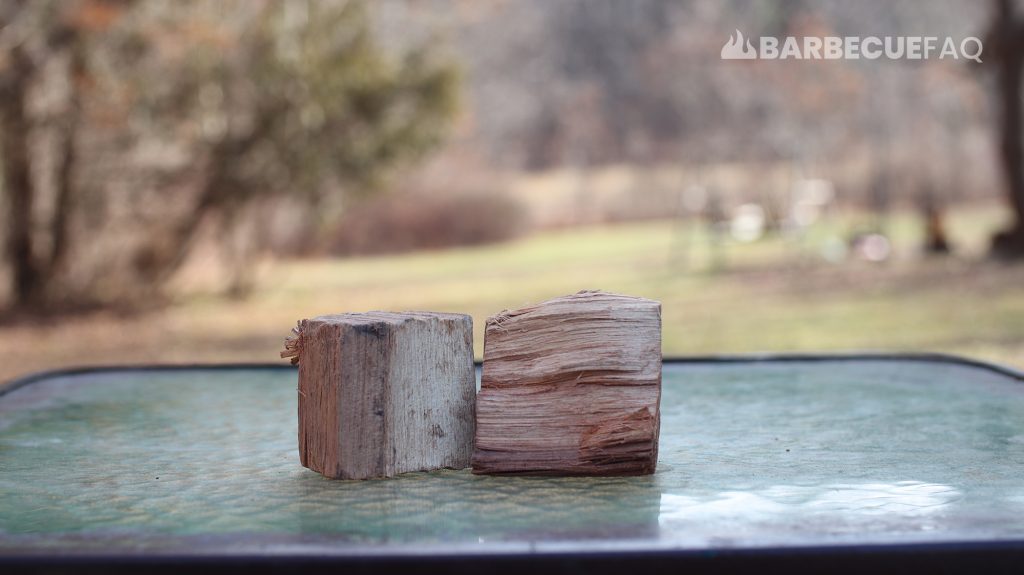
- Smoke Flavor: Stronger
- Common Use: Beef and Pork
- Availability: Readily available regardless of locale
- Pecan is a species of hickory. Meaning if you buy “Hickory” wood it could also be pecan.
Pecan is a mild wood – sometimes even described as spicy/nutty.
It doesn’t tend to burn as long as Oak or Hickory. For this reason, it’s typically used for shorter cooks like ribs (I’m a big fan of Pecan with Pork ribs), fish, and beef.
Woods to Avoid Using (Softwoods)
As a general rule of thumb, it’s best to avoid smoking with softwoods (evergreen or coniferous trees) like pine, spruce, fir, hemlock, redwood, and cypress.
Softwoods contain more air in their cell structure, meaning the wood burns very fast – the exact opposite of “low and slow” required for barbecue.
Softwoods also contain sap and resin (contains terpenes, the source of turpentine). As you might expect, nobody wants to eat paint solvent – which is also toxic when ingested/inhaled.
What is the Best Wood for Smoking X, Y, and Z?
Beginners to smoking meat are often told to use different types of wood with different types of meat. Often equating certain species of hardwood to be “best” for certain types of protein.
As we learned above though, smoke doesn’t really work like that.

What I tend to suggest to Beginners is to work with Fruit woods first like Cherry, Apple, and Peach and to see how they like it. If they’re satisfied with the smoke output, stick with it for a while.
If you thought the food could of taken on more smoke, experiment with adding Oak or maybe Hickory/Pecan.
Keep in mind, lots of folks can be lead astray when it comes to using different species of wood with different types of meat.
Truth be told, the chemical byproducts of wood combustion are not universal and depend on the species, age, and even the mineral composition of the soil – meaning, the “flavor” can change depending on if it’s grown in New England or on the West Coast.
“In addition to oxygen, hydrogen, nitrogen, and carbon, trees are composed of many other mineral elements. While these elements do not produce energy during combustion they do affect the energy content of woody biomass. On average, hardwoods have a higher concentration of these mineral elements than softwoods; but the presence of these minerals is more affected by the site where they are grown than their age, species, or size.”
D. Cassidy – The Forest Encyclopedia – p1263


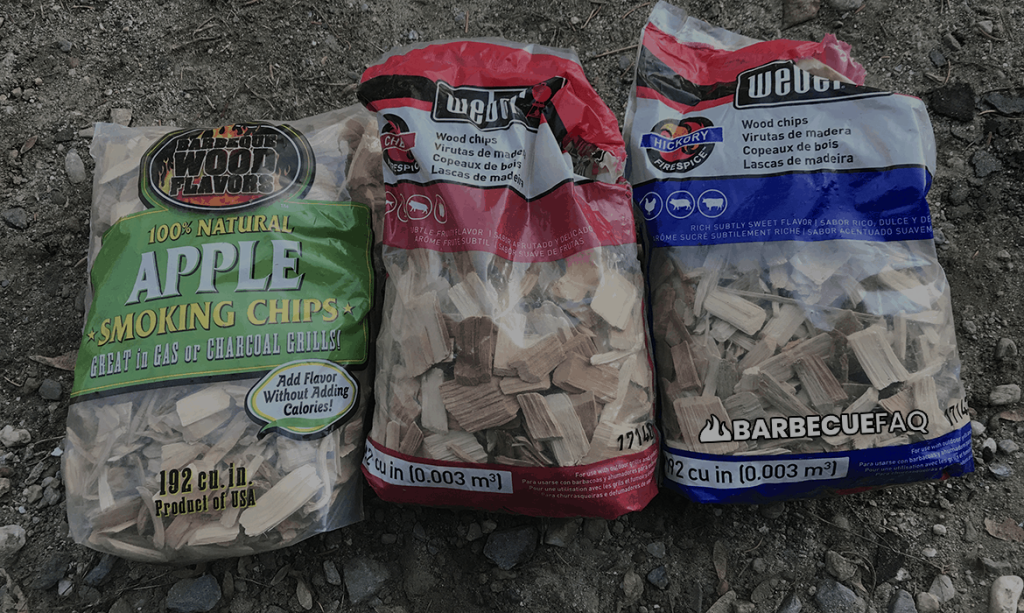
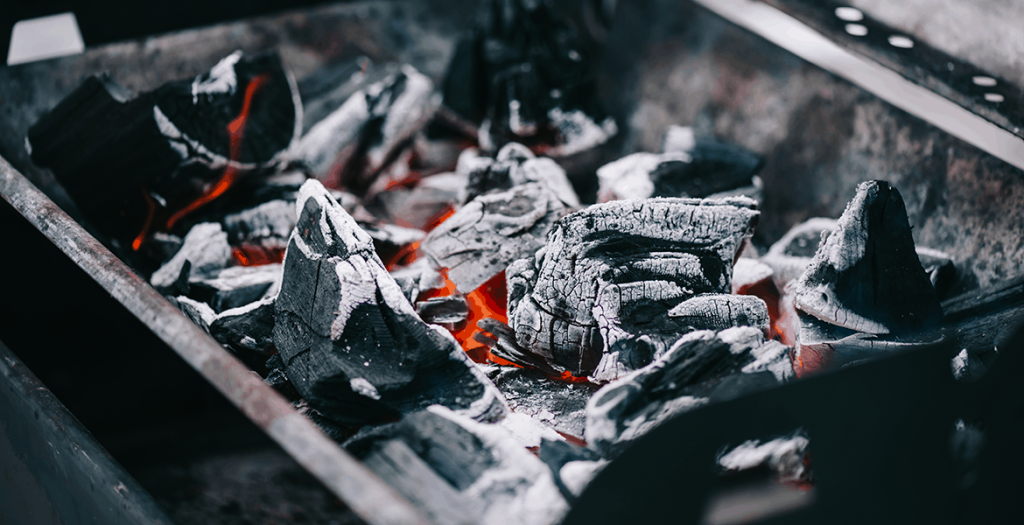
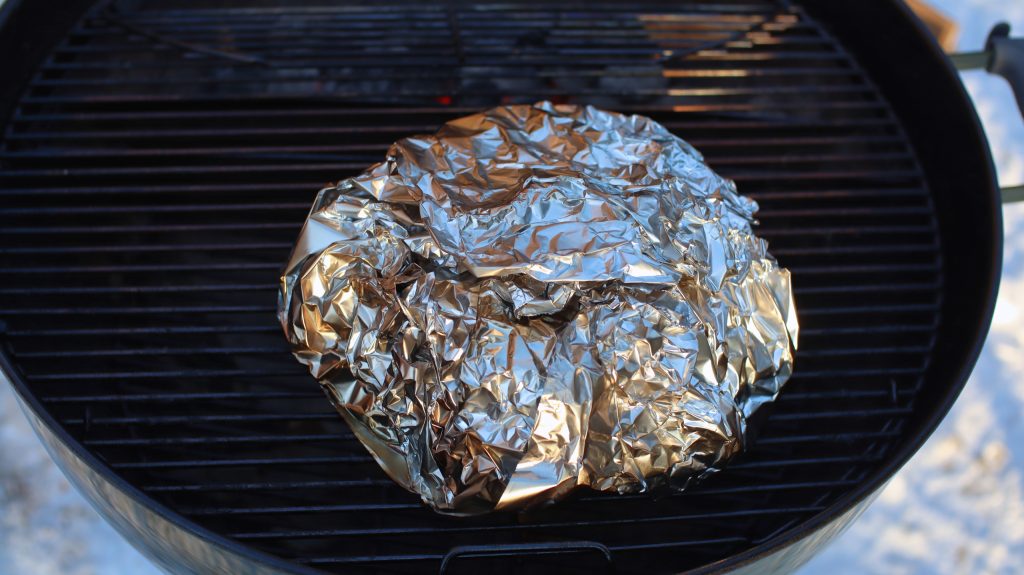
8 comments
Nancy
Great article, easy to follow. As a relative beginner and a person willing to experiment, I thought I’d just share my first smoking experience which was smoking plum tomatoes. They were so delicious and I made an Italian caponata with them and continued to use them all winter in stews. Either in canned jars or freezer cubes they enhance any chili, soup, you name it.
I’m hoping to make jerk chicken and pimento wood is used. Do you have any experience with this wood in a smoker? Thanks
Dylan Clay
Smoked plum tomatoes sounds awesome! I’ll have to keep that in the back of my mind when it comes time for growing my tomatoes – even though I smoke tons of meat all year round, I’ve never smoked tomatoes before.
Unfortunately I’ve never used Pimento wood. If you end up testing it, please report back with your findings – especially if it’s pungent or not.
RM.Ness aka TreeDropper
Quite interesting take on the subject. Very informative post/article in my opinion.
One thing you never mentioned throughout the entire article was and is my favorite over all smoking woods and meats COMBINED is ???? SMOKING FISH!
To me there’s nothing better than a big fresh slab of salmon cooked with pecan and peach!! Nothing better in my book!!! I’ll take it over any brisket or ribs any day of the week! My favorite would be tuna blue fin of yellow fin tuna, then comes swordfish and mahi-mahi. I would cook and eat any one of those above over any red meat smoking combination you can come up with or pork.
So with that said, just my opinion, but really great article I just was really stunned that fish was not mention one time. Being that one of your favorites is peach I was waiting for it, but it never came.
Dylan Clay
Hey there,
So I sort of glossed over fish – but I actually smoke salmon quite regularly, I’m just not big on variety when it comes to the wood I use. In almost all cases I use Maple for Fish/salmon (I’m from New Hampshire) or a fruit wood like Peach. Checking my article I mention fish 1 time in the Pecan section but fail to mention it in the maple – I’ll need to update the article.
I also take a different approach to yours for smoking fish too – I’m big on brining first with salt and sugar and then air drying for 24-48 hours to form a pellicle. I then smoke at around 180F so that the albumin doesn’t seep out of the fish. Your style is more-so grilling which I can definitely appreciate – the skin almost gets like a potato-chip-like quality that’s awesome.
-Dylan Clay
Jim W
Enjoyed the informative article. No nonsense, down to earth style. Very well done.
Dylan Clay
Appreciate your comment Jim!
-Dylan
Keith Cooper
Thanks for all the information, I needed it.
Dylan Clay
Happy to help Keith!